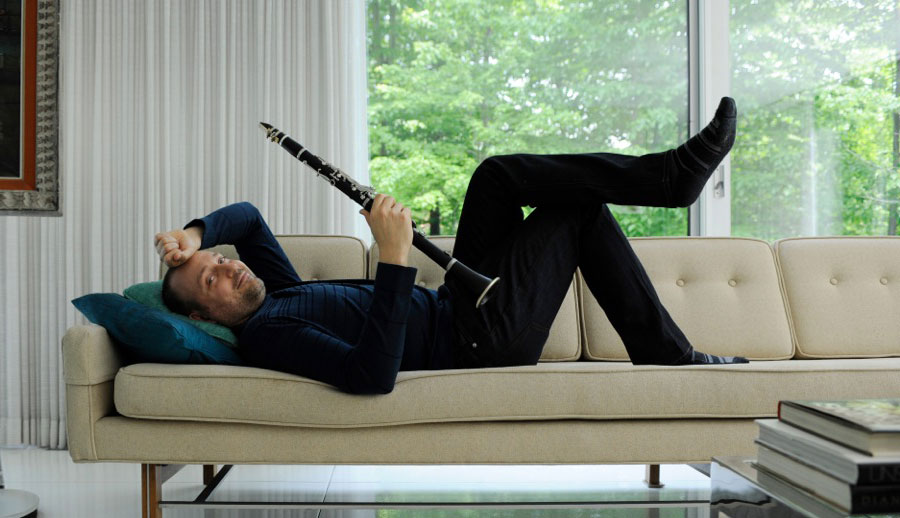Haydn & Messiaen: July 11, 2018
Olivier Messiaen’s Quartet for the End of Time represents a triumph of faith and creativity in the face of an uncertain future. When Messiaen, conscripted in the French army during World War II, was captured by the German forces and sent to the Stalag 8A prisoner-of-war camp outside Görlitz, he stowed a precious folder of beloved sketches close to his chest. These cherished materials, strung together with phrases from the Book of Revelation, inspired his masterpiece, which he and his fellow prisoners managed to premiere while in captivity.
JOSEPH HAYDN
Piano Trio in C Major Hob XV:27
The piano trio was a popular domestic form in the eighteenth century; symphonic arrangements for piano trio allowed larger forms to be heard inside the home, while original compositions for the ensemble often resembled keyboard sonatas with string supplements. The earliest among Haydn’s forty-plus trios are in this mold; while in his later trios, he began to experiment in texture by expanding the roles of the individual instruments, and in form by adding third movements.
The development of Haydn’s trio-writing technique seems to have been stimulated by two voyages the composer took to London, in 1791-92 and 1794-95. At that time, London had a flourishing publishing industry, with a robust market for amateur music; the proliferation of piano trios Haydn composed during these journeys was surely inspired by these local demands.
The set of three trios (Hob. XV:27-29) were composed during the second of Haydn’s trips to London, where they were ultimately published in 1797. All three were dedicated to Therese Jansen, the German-born pianist known as one of Clementi’s star pupils. Haydn also served as witness at Jansen’s marriage to the prominent art dealer, Gaetano Bartolozzi, in 1795, and was one of several composers to dedicate works to the accomplished young musician.
OLIVIER MESSIAEN
Quatuor pour la fin du temps
Olivier Messiaen did not compose much chamber music in his long career, and his Quartet for the End of Time was more a result of circumstance than the product of a vision. Messiaen was drafted into the French army during World War Two, although given his poor eyesight he was assigned only to non-combat posts, including a tailor-made position at the army’s Musical and Theatrical Center in Verdun. Nevertheless, when the Nazis invaded France in May 1940, thousands of soldiers were captured; Messiaen was taken to Stalag-8A, a prisoner-of-war camp outside the German town of Görlitz, in what is today just over the Polish border.
Messiaen recounted the story of how the Quartet emerged during his time at the camp:
“In the Stalag with me were a violinist, a clarinettist and the cellist Etienne Pasquier. I wrote an unpretentious little trio for them which they played to me in the washrooms, because the clarinettist had kept his instrument and someone had given the cellist a cello with three strings. Emboldened by this first experiment, called ‘Intermède’, I gradually added the seven movements which surround it, and it is thus that my Quatuor pour la fin du Temps has a total of eight sections. An upright piano was brought into the camp, very out of tune, the keys of which seemed to stick at random. On this piano I played my Quatuor pour la fin du Temps, in front of an audience of five thousand people – the most diverse mixture of all classes in society – farmworkers, labourers, intellectuals, career soldiers, doctors and priests. Never have I been listened to with such attention and such understanding.”
More recent research demonstrates that Messiaen embellished aspects of this narrative as he told it throughout his life. Etienne Pasquier himself, for example, denied that his cello only had three strings; and it appears that the cultural life in the Stalag was in many ways rather vibrant, with regular evenings dedicated to theatrical and musical productions in which Messiaen and his fellow musicians appeared to participate. In fact, despite the notes Messiaen published alongside each movement linking them thematically with verses from the Book of Revelation, it was only after each of the component movements were individually composed that Messiaen had the idea to compile them into a unified work with a biblical theme. A number of the movements – including the ‘Liturgie de Cristal’, the ‘Abîme des oiseaux’, the ‘Danse de la fureur’, and the two ‘Louanges’ – were composed prior to Messiaen’s arrival in the camp, carefully preserved by the composer throughout his military dispatches in his trusty satchel, and only subsequently rearranged for the available musicians. While these discoveries may contradict the version of the work’s genesis propounded by the composer, they testify to a no less poignant story of creation under duress, of musicians adapting to strenuous and precarious circumstances in the pursuit of their art.

